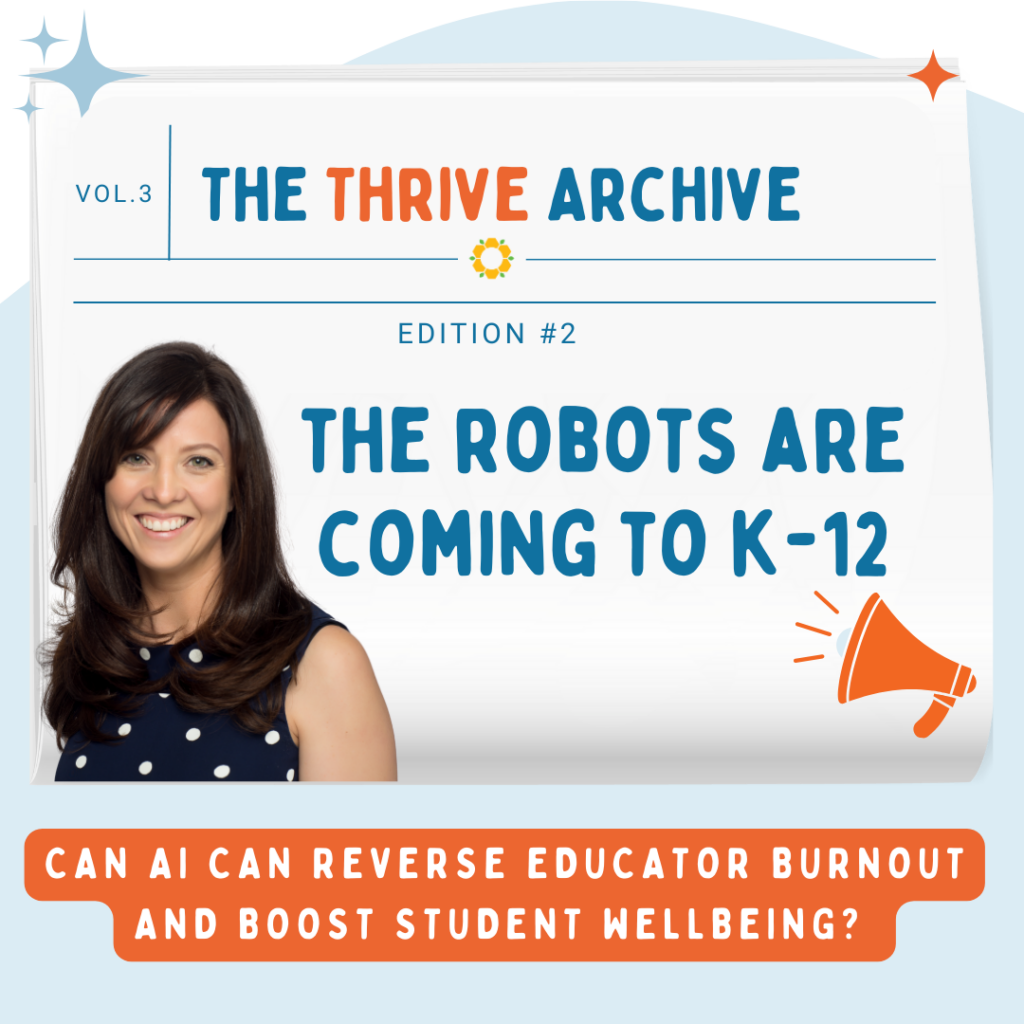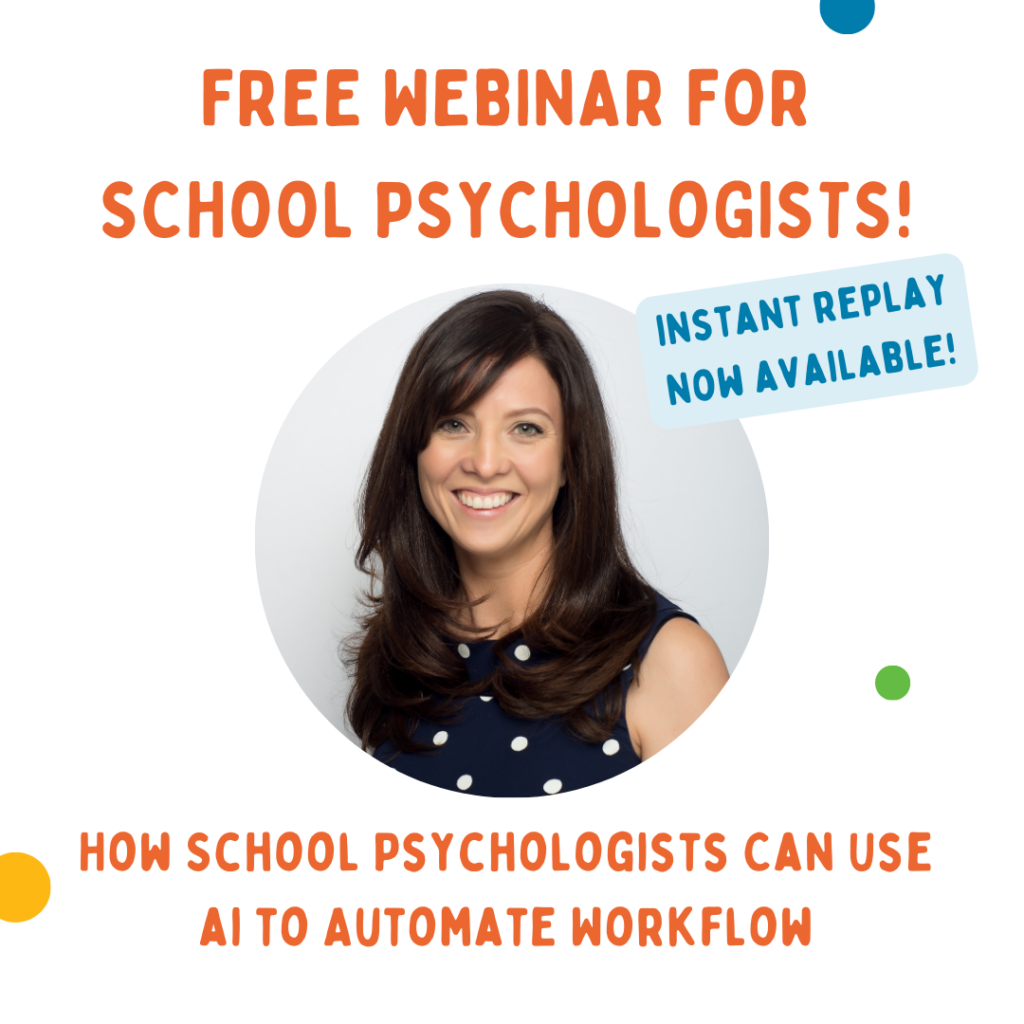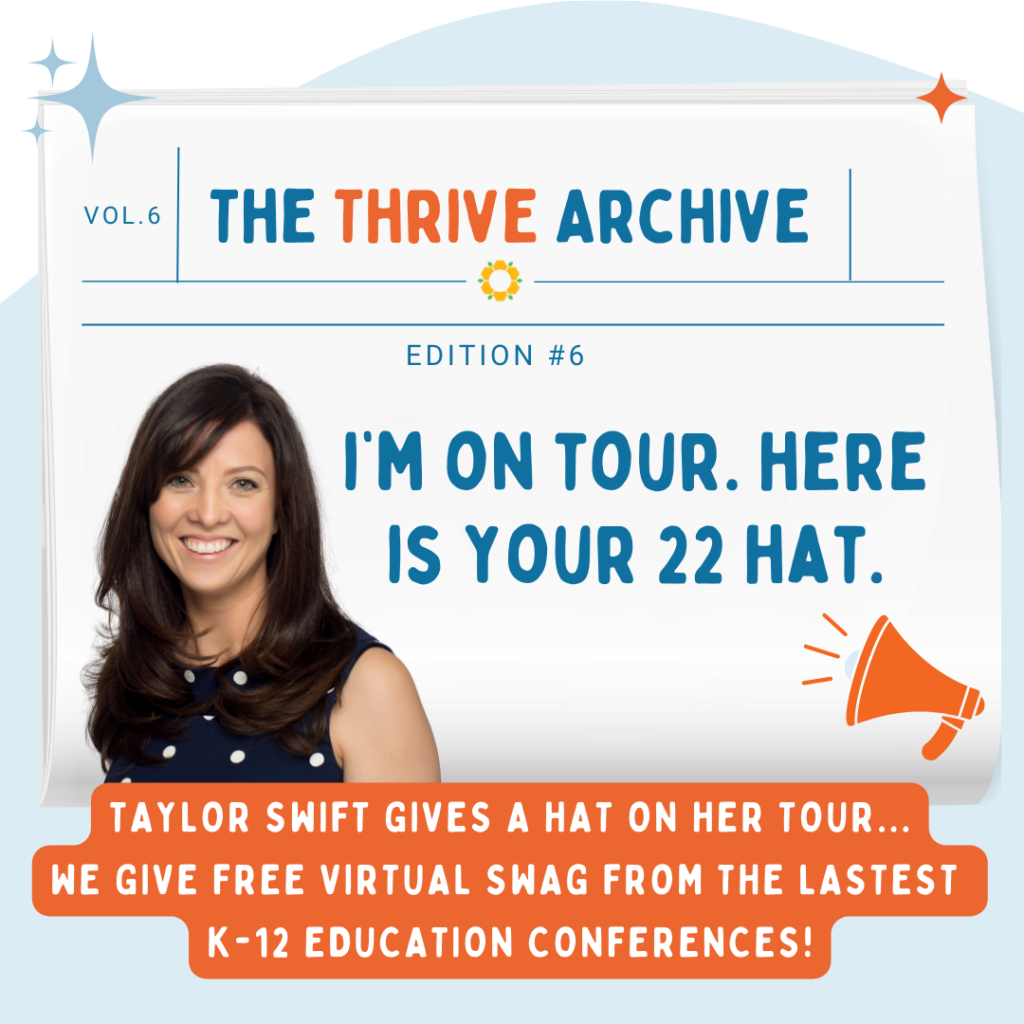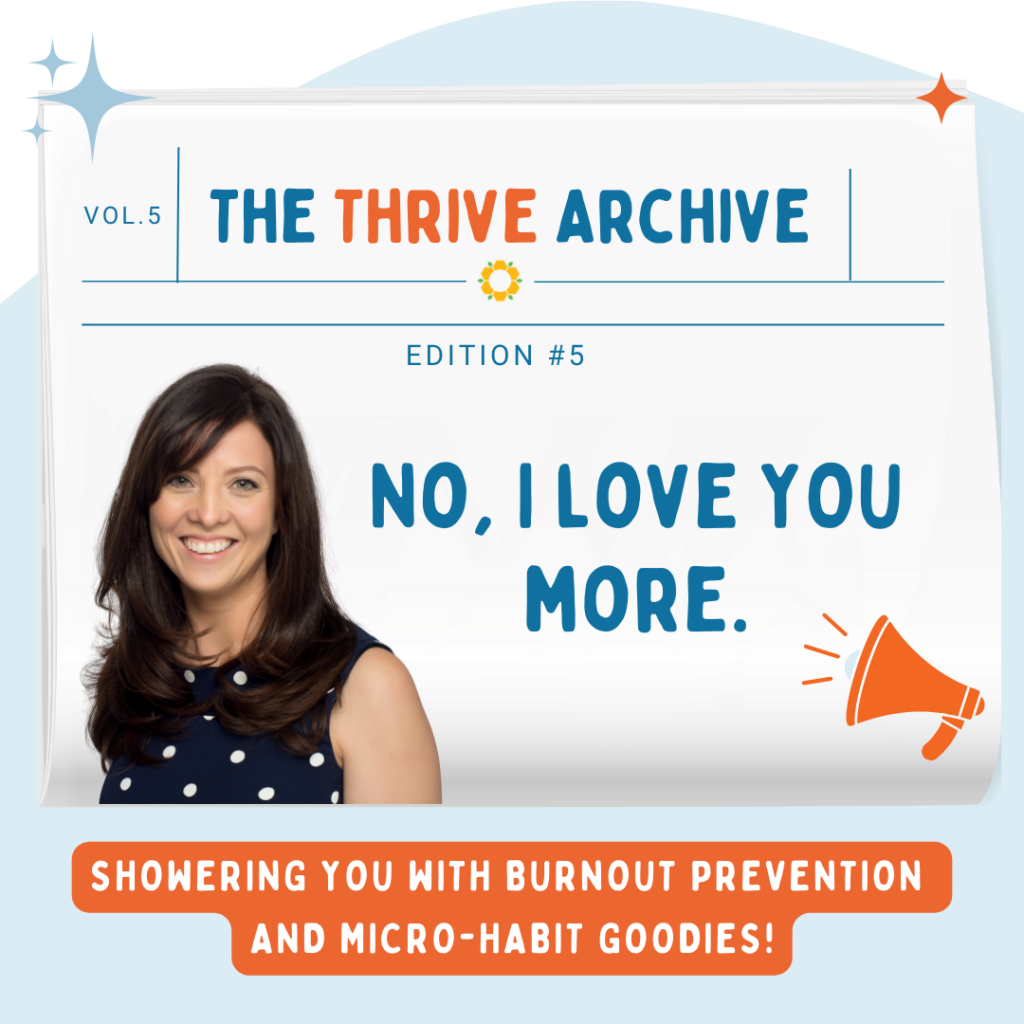- For School Psychologists, For Teachers, News

Lately, all signs point to AI — Artificial Intelligence — no matter where I go.
My kids picked Mitchell vs. The Machines for family movie night.
Theme: The robots are coming!
Every K–12 education conference I’ve gone too, everyone is talking about AI.
Theme: The robots are coming!
I saw Mission Impossible 47 (or whatever version they are on).
Theme: The robots are coming!
Well, if the robots are coming, we might as well get ready!
But instead of fighting them like Tom Cruise and the Mitchells, let’s see what they can do for us and how we can use AI responsibly to streamline our workflow as educators and enhance learning outcomes for students.
The Explosion of AI in K-12 Tools
Can y’all believe Chat GPT is only a year old? The landscape since Chat GPT hit the mainstream has forever changed education. It took the average educator’s understanding of AI from “that chatbot on a website that doesn’t quite understand my request” to “kids will plagiarize everything” and now has evolved to “this tool, like the Internet, is a game changer.”
Here’s a fun visual journey of that.
Since I’m a school psychologist in K12, I asked AI to make images of an “AI School Psychologist.” This is the first image.

This is like a bot I don’t understand, and it’s not quite right. But, it sort of looks like I’m helping, and we’re both smiling, so it almost works for me. (Like I say in my AI trainings, AI will take you to “third base” but you need a human to “hit it home”).
The second image of an AI School Psychologist was a little scarier.

I think that these two images are actually pretty reflective of where AI in K12 is. Some folks think it’s helpful but confusing, and some people think it will kill education and learning for-evah and we are all going to be replaced by cyborgs.
No matter what side of the AI spectrum you fall on, it’s here to stay, and it’s only going to get bigger and integrated into more and more of our daily life.
AI and All the “Scary Things”
Concerns about bias, data privacy, plagiarism, and AI straight up hallucinating and making things up are troubling.
I tried several times to have AI generate an image of an AI webinar I am hosting for school psychologists and every time, the training was taught by a white man and the audience was all white.

When I explicitly said to make the presenter a woman and add diversity to the audience, it crashed. It’s like its biased head exploded.

So that’s not good. But as I like to say in my trainings for parents on promoting healthy screen time, technology isn’t good or bad. It’s a tool and it depends on how you use it.
In many ways tech is like a hammer– you can create or destroy things, depending on how you use it (and you don’t just give a hammer — or a tech tool– to a child without guidance).

We are all AI toddlers right now. We can’t just grab the hammer of AI without knowing the limits and ways to counteract bias and misinformation. We also can’t declare AI hammers too dangerous and avoid trying them out altogether.
So, since we’re in uncharted waters, let’s do like we did when the Internet dropped: Keep calm and learn on. We’re in the messy middle. And like I tell my students, that’s where the most learning occurs.
AI Overwhelm is REAL.
The explosion of AI can be overwhelming for educators, with all the new chatbots and tools targeted to make our lives easier or to be a game-changing tool for our students.
It feels kind of like at the beginning of the pandemic during distance learning, when we got thrown a zillion new tech tools all in one week. My parent and school psych inbox was full of directions like, “To access your portal for your Kindergartner, just log into ZipZop, check your Porterly Portal, and check the SchoolZ dashboard for the Teeter-tot platform to log into your Zoom meeting.” And it made me want to give up on all of it.
(If you want to revisit that fun moment in history in which I raged against the Chrome machine, check out my article in Scary Mommy called “I’m a School Psychologist But Nothing Prepared Me for Stress of the Pandemic.”)
Thankfully, I’ve been able to dig into the new tech without also having to navigate distance learning (and a pandemic puppy).
In our Thriving Students Collective community, we’ve started “dabbling in the messy middle of AI” with the following:
1) Automating Mundane Tasks: getting support with writing psychoeducational reports, IEP goals, 504 plans, emails, etc.
2) Idea generation: creating lesson plans, counseling goals and activities, differentiation, etc.
3) Boosting executive functioning by streamlining workflow—learning task initiation, organization/focus, and auditory attention hacks for both adults and students!
We’re curating a list of the tools that work for us and our students, and every day, we learn more.
Of course, these three types of tasks we’ve dug into are the tip of the iceberg for what AI can do, but like the early days of Zoom and ZipZop (I’ve repressed the names of all the new tech I had to learn), starting with learning ONE THING is easier than starting with ALL THE THINGS.
FREE AI Training for School Psychologists
Since my inner circle of Thriving School Psychologist Collective members have been using AI to streamline report writing and automate bureaucratic tasks for over a year now, we have learned a lot…and we’re not gatekeeping!
Every few months, we share what we’ve learned with the larger school psych community in live trainings. I held one in December and it was a fun one! I shared 6 ways to use AI to automate workflow and how to support students’ executive functioning with AI.
School psychologists can catch the replay recording through December 11th here.

Can AI Help Prevent Burnout?
Educators and school mental health professionals are still reeling from pandemic learning loss, scrambling to help kids in a mental health crisis (described by our surgeon general as “the defining public health crisis of our time,”) and unprecedented challenges with burnout.
Certainly AI can help, but it is not the whole solution. The snazziest AI thingy on the planet isn’t going work if we’re too stressed out to find the time to learn it (remember the pandemic tech learning curve, y’all?).
When we are in stress mode, we are in “brain stem” survival, and it’s hard to be in frontal lobe where reasoning and learning occurs. (As I lovingly say with parents and students, it’s the difference between “Lizard Brain” and “Wizard Brain)”.
That’s why the science of adult learning and wellness is baked into the DNA of our professional learning platform.
One example of this blending of burnout prevention and up-skilling is one of our signature courses and community, the Thriving School Psychologist Collective, which has been shown to reduce burnout and turnover and expand school psychologists’ roles to more preventative services (and using AI has been a big part of this–since less time writing reports is more time for supporting students, teachers, and families).
With the shortage of mental health providers in K12, it is imperative that we retain our current workforce. That is why we are opening up a special new cohort of our burnout prevention program for school psychologists in 2024, and monthly live coaching on AI is a big part of it.

If you’re a district leader interested in retaining and up-skilling your school psychologists, click here to chat with us!
In Non-Robot News
Long before the robot invasion, I started preaching to whomever would listen about the importance of preventing burnout in K12. While automating mundane tasks has always been a part of reducing educator stress, it’s not the whole picture. When I published my first book in 2011, I argued that getting more efficient is one of four research-based pillars of thriving as an educator.
I’ve been “on tour” ever since, with my greatest hits, including:
“You Are Not One Excel Spreadsheet Away From a Stress-Free Job (Because Organization is Only One of Four Pillars of Thriving)”
“Your Burnout is NOT a Personal Self-Care Fail”
” Hi, It’s Me. I’m the School Psych, it’s Me, and We Need Lower School Psych to Student Ratios to Address the K-12 Mental Health Crisis (Rebecca’s version)
As the year closes, I reflect on all the places and spaces I’ve been fortunate to have visited, talking with educators, district leaders, and school psychologists about reversing burnout and advancing student success.

From talking with teachers and special education administrators in California to school psychologists in Italy, it’s been quite a year! I am looking forward to more collaboration, innovation, and connection in the new year. Here’s where I’m headed in the first part of 2024. I love meeting educators–connect with me on LinkedIn if you’re going to be at any of these events!

Oh…and if any of my talks in 2024 happen to overlap with ComiCon again like it did in New York last month, I’m HERE FOR IT.

Thriving In Action – Savoring Joy
The idea of “savoring” is a micro-habit for wellness that I love to share with folks (I call them “micro-happies”). Research shows that savoring joyful things and revisiting happy moments make a big difference in our happiness.
So I’m going to savor and revisit the joy of an awkward selfie in dim lighting with two amazing teacher leaders!
Here’s a picture of pure joy, geeking out with Angela Watson of Truth for Teachers (and co-creator of our How to Reverse Educator Burnout program) and Zaretta Hammond, author, thought leader, and founder of Transformative Learning Solutions.

This moment of joy was brought to you by New Schools Venture Fund at our communities of practice conference in NYC, where my amazing CEO and co-founder Sarah Hauser and I represented our organization, Thriving Students Collective. Alongside all the other grantees, we got together to geek out on creating and sustaining equitable solutions for students with learning differences. There’s something so joyful and energizing about “humaning” in person with amazing humans doing big things in the world, isn’t there?
I hope that this holiday season brings you much joy, whether it be geeking out with other educators over coffee, finding a new AI tool that transforms your practice, or even just watching a great movie, like Mitchells Vs. The Machines.
Just remember from words of wisdom from Rick Mitchell about the joy that can come from detoxing from phone and computer use:

So if you need a tech break from all the robots this holiday break, that’s cool too.
See you in January for the next Thrive Archive digest!

Want more K12 News You Can Use? Subscribe here!
Dr. Rebecca Branstetter is a school psychologist and co-founder of The Thriving Students Collective, which provides professional development, engaging online courses, and a supportive online community that prioritizes whole-school wellness and equips educators and parents with practical tools to empower every learner’s success. She also has a TikTok account all about burnout prevention in K12 that her middle school daughter has endorsed as “Cringe, but good dancing.”

